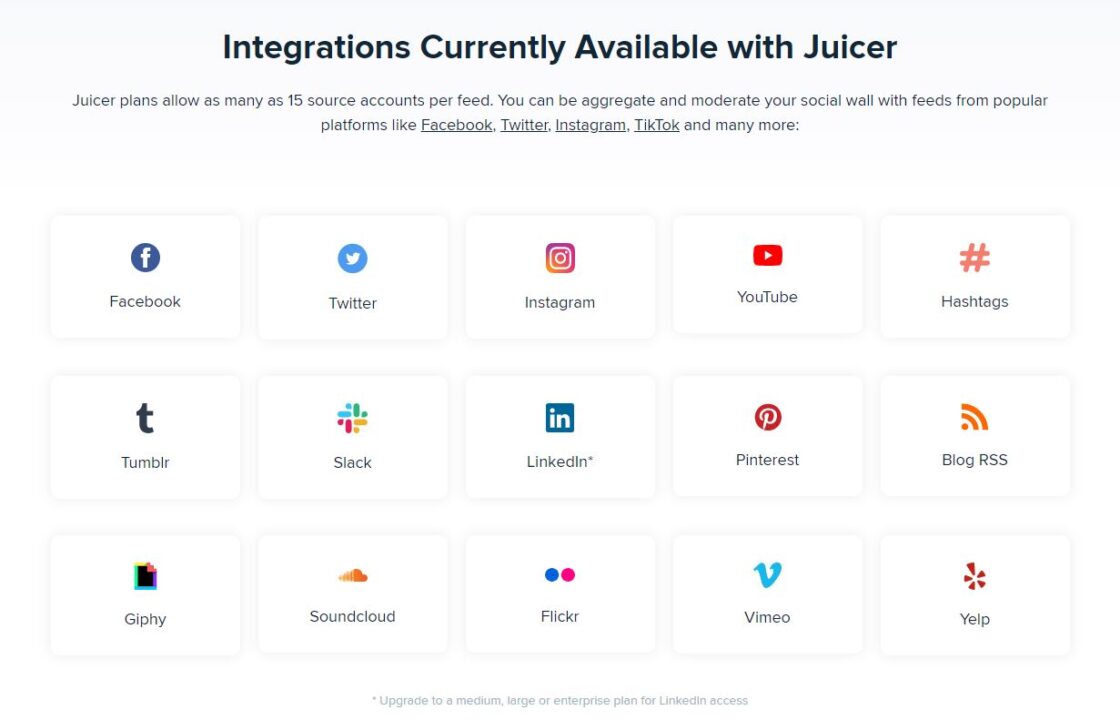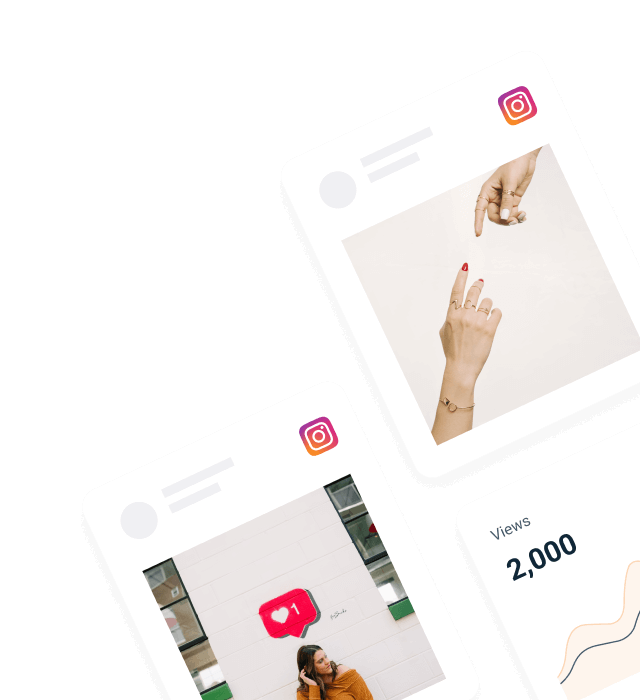Maintaining a consistent and engaging online presence is essential for business success. This is especially true for small business owners and entrepreneurs who need maximum impact from limited resources. With countless social media platforms, knowing how to connect your blog and social media strategy effectively can mean the difference between reaching the right audience or getting lost in the noise. Billions of consumers now turn to the internet to research brands, products, and services before making purchasing decisions, encountering new companies and offerings competing for their attention every time they browse online.
For tech-savvy professionals aged 25-45 who manage multiple marketing channels, the challenge lies in creating cohesive strategies that work across all touchpoints while maintaining efficiency and measurable results.
Prior to diving into the ways you can make your blog and social media perform well together, try considering these fascinating facts:
More interesting blogging and social media statistics reveal how users interact with content across different social networking sites (Source: https://www.hubspot.com/marketing-statistics)
- More than half of all businesses (60%) are planning to increase their Instagram budget
- The number of global social media users reached 4.95 billion in 2023, representing 61.4% of the global population (Statista, 2024)
- 56% of marketers who leverage blogging say it’s effective and 10% say it generates the biggest return on investment. (HubSpot Blog Research, 2021)
- Facebook is the primary content distribution channel for marketers today.
- 4 of 5 LinkedIn members drive business decisions. (LinkedIn, 2021)
- Users spend an average of 10 hours a month on Instagram. (Hootsuite, 2021)
- 82% of B2B content marketers leveraged Twitter for organic marketing in 2021.
- Companies that blog receive 97% more links to their websites than those that don’t (HubSpot, 2023)
- 73% of all marketers rank “increased acquisition of new customers” as their top outcome for social in 2021 (Hootsuite, 2020)
- Businesses using social media for blog promotion see 32% more traffic than those using traditional methods (Content Marketing Institute, 2024)
Contemporary businesses recognize that blogging and social media presence are equally fundamental for engaging audiences within the busy online marketplace of today. Nevertheless, most businesses still regard these formidable marketing outlets as isolated entities, not holistic elements of a broader strategy.
Reality is that social media and blogging ought to be two supplementing factors within an overall coherent and ROI-driven content marketing strategy.
Here is the process for communicating blog content on social media, seeking alternative channels for engaging the reader, and your multi-site strategy becoming a reality for your social media channels.
Why you need to integrate your social media and blog
Including your company blog and social media is key since 54% of the decision-makers spend over an hour weekly reading and learning through thought-leadership content (Edelman/LinkedIn 2021), and 48% of content marketing-savvy businesses blog. Source: Hubspot
Companies have numerous opportunities to boost brand awareness by leveraging the right online assets strategically. When brands publish valuable, helpful content, they establish themselves as thought leaders in their respective industries. This positioning delivers significant benefits, including increased brand recognition, enhanced website engagement, and improved customer trust. Social media also provides businesses with opportunities for communicating one-to-one with target markets and building significant connections that can assist them in effectively marketing their solutions.
Unfortunately, not every company utilizes these two powerful solutions in tandem.
Combining your blogging and social media strategies is one of the best methods for maximizing brand awareness, increasing awareness, and realizing your full potential for generating lucrative leads. Although your blog is the perfect vehicle for the delivery of valuable and fascinating content, your social media can help facilitate driving that content into more and more traffic through proper promotion and rollout.
Simultaneously, when you embed social media content on your website, you can enhance your brand reputation, increase the amount of time customers spend on your site, and leverage user-generated content as powerful social proof.
How can social media and blogging complement each other?
Social media and blogging complement one another because both are good for building brand awareness and for driving your business growth. They do, however, function through very disparate mechanisms and for very disparate purposes within your overall marketing strategy.
Blog
A blog is an effective tool for “SEO,” or otherwise known as Search Engine Optimization. It enables you to push your company website higher up when customers search for definitive answers, specific products, or solutions via search engines. Besides, blogging is a fundamental element for establishing thought leadership, where you can convey content that specifically deals with the interests, questions, and pains of your target audience.
Social media
Social media operates as an excellent “promotional platform” for companies, enabling them to share links to existing website content and drive targeted traffic to their pages. Social media is also a great relationship-building tool and credibility booster, causing customers to be more inclined to pick your brand over the competition.
Platform-Specific Social Media Blog Strategy
Different social platforms require tailored approaches when integrating with your blog content. Understanding how to optimize blog content for social media and create shareable social posts from blog content maximizes your reach and engagement potential across various social media sites. Should bloggers be on all social media platforms? The answer depends on your audience and resources, but strategic platform selection is key to connecting with users where they spend their time.
Instagram Integration
Instagram’s visual-first approach makes it ideal for promoting blog content through eye-catching graphics, behind-the-scenes content, and story highlights. Design custom graphics that highlight blog main points, promote upcoming blog content via Instagram Stories, and use Instagram Reels to turn blog content into interesting short video content via the short-format format. As Instagram Reels continues its surge upward, the format provides great ways for reaching new audiences and garnering user feedback. According to Sprout Social’s research, Instagram posts with carousels see 1.4x more reach and 3.1x more engagement than single-image posts.
Facebook Cross-Promotion
Facebook’s diverse content formats allow for comprehensive blog promotion through native posts, Facebook Stories, and Facebook Groups. Share blog excerpts with compelling visuals, create Facebook Events around blog launches, and engage in relevant Facebook Groups by sharing valuable insights from your blog content. Recent data shows that Facebook posts with images receive 2.3 times more engagement than text-only posts (Buzzsumo, 2024).
LinkedIn B2B Approach
LinkedIn excels for B2B blog promotion through professional networking and industry-specific content sharing. Publish blog summaries as LinkedIn articles, share blog insights in industry groups, and use LinkedIn messaging to share relevant blog posts with professional connections. This platform is particularly effective for writing in-depth content that resonates with business professionals and generates meaningful discussions. Content Marketing Institute reports that LinkedIn generates 277% more leads than Facebook and Twitter for B2B marketers.
TikTok and Emerging Platforms
Newer platforms like TikTok require creative content adaptation. Convert blog insights into fast tips, produce teachable TikTok content from blog posts, and leverage trending sounds for making blog content more discoverable. According to Influencer Marketing Hub, TikTok users spend nearly 95 minutes daily on the platform and therefore can serve as an excellent channel for content discovery.
Combining social media and blogging

Blogging and social media integration enable you to expand your brand reach, help advertise your blogs more effectively, and make your website more attractive for your target market. Integration aligns your brand appearance within your blog content and creates a more uniform appearance for both your website and social media platform.
Including social media content in your blog posts
Including your social media posts gives customers a wider range of content options when learning about your brand or product. Adding social media content to your website is also an excellent way to increase the amount of time customers spend engaging with your content. The more engaging content your viewers have access to, the more they’ll want to interact with your brand. For instance, creating a wall by embedding your Instagram feed on your website can significantly enhance user experience. You can also curate content and embed it on a dedicated page on your website. This approach works particularly well when running competitions or featuring content from specific hashtags like #photooftheday.
Sharing your blog content on your social media platforms
Sharing links to your blogs in your social media campaigns increases your chances of reaching customers who might not be specifically searching for keywords and phrases on Google. This strategy greatly helps with content discovery and distribution to the right target audience, especially when you run paid social media ads to promote your content effectively.
Technical Implementation with Juicer
The most effective way to integrate social media and blog content into your website is through social media aggregator tools like Juicer.io. This approach shows how blogs and social media pages can be linked seamlessly. The implementation process is straightforward and user-friendly.
How to Integrate Social Media with Your Blog Using Juicer
Getting started with Juicer’s social media integration is straightforward and user-friendly. The process begins with signing up for a free Juicer account – no credit card required. Simply visit our website and complete your profile with basic information to get started.
Next, you’ll need to connect your social media accounts to Juicer and grant the necessary permissions for content access. Our system will verify the connections to ensure everything is working properly. This secure connection allows for seamless content synchronization between your social media accounts and website.

Once connected, you can customize your widget to match your website’s design. Choose your preferred layout, adjust colors and styling, and select display options for your content. You can also configure update frequency and display settings to ensure your latest social media posts stay fresh and relevant.
The final step is implementing the widget on your website. Simply copy the generated embed code and paste it where you want the social content to appear. We recommend testing the implementation on different devices and making any necessary adjustments to sizing or placement. The widget will automatically update when you post new content, keeping your website fresh and engaging. You can also moderate which posts appear on your website, ensuring only the most relevant content is displayed to your visitors.
For WordPress websites, you can simply install the Juicer plugin for seamless integration. For other platforms, learn how to add social media sources to your Juicer feed on Wix, Squarespace, and other platforms. If you want to embed social media posts from specific platforms onto your blog or website pages, refer to these comprehensive guides:
How to add Facebook posts and feeds to your website
How to embed TikTok videos onto your website
How to embed a Twitter feed onto your website
How to embed Linkedin onto your website
How to embed Instagram posts onto your website
How to embed Instagram Reels in your website content
How to add YouTube videos to your website
Advanced Cross-Platform Content Strategies
Beyond basic integration, advanced cross-platform strategies can significantly enhance the effectiveness of your combined social media and blogging approach. The key is understanding how content performs differently across platforms and adapting accordingly. Smart marketers use specialized tools and services to track trends, analyze user behavior, and discover what resonates with their target audience across different social media sites.
Advanced Content Repurposing Techniques
Transform single pieces of content into multiple formats across different platforms with strategic adaptation. This is how to integrate blogs and guides into content strategy effectively:
Platform-Specific Adaptations:
- Instagram: Turn blog posts into carousel graphics with key statistics and actionable tips
- LinkedIn: Create professional summary posts with industry insights from your blog content for your business audience
- Twitter: Extract quotable moments and create thread series from longer blog articles on your site
- TikTok: Transform “how-to” blog sections into quick tutorial videos using the app’s native features
- Facebook: Develop discussion-starter posts that link back to detailed blog analysis and encourage comment engagement
Linking a website blog to social media accounts enables seamless cross-platform content sharing. Consider creating a free social wall for your website to showcase this integrated content across all platforms simultaneously.
Cross-Platform Analytics
Monitor performance across all integrated platforms to understand which content resonates best with different audiences. This blogger social media strategy approach helps you learn how to optimize blog posts for social sharing. Use insights from social media engagement to inform future blog topics, and leverage blog analytics to optimize your social media marketing approach.
Strategic Integration Combinations
The best ways to combine social media and blogging strategies involve systematic approaches that multiply your content’s impact:
The 3-2-1 Content Strategy:
- 3 social posts promoting different angles of your blog content
- 2 platform-specific adaptations (e.g., LinkedIn article summary + Instagram carousel)
- 1 follow-up engagement piece (poll, question, or discussion starter)
Timing and Scheduling Optimization: Coordinate your blog publishing schedule with social media promotion timing. Plan social media teasers before blog publication, schedule multiple social posts to promote each blog article, and create follow-up content that extends blog conversations. Research from CoSchedule shows that posting at optimal times can increase engagement by up to 23%.
Integration Tools Ecosystem: While Juicer serves as your central social media aggregation hub, complementary tools can enhance your strategy:
- Content scheduling: Buffer or Hootsuite for automated posting
- Design tools: Canva for creating platform-specific graphics
- Analytics: Google Analytics for tracking cross-platform performance
- Email integration: Mailchimp for blog-to-newsletter content flow

Social Media Integration for Small Businesses
Small business owners and entrepreneurs face unique challenges when implementing social media-blog integration strategies. Limited budgets and time constraints require smart, efficient approaches that maximize ROI.
Budget-Friendly Integration Strategies
Free Tools and Methods:
- Social sharing buttons: Adding social sharing buttons on your website allows customers to easily share your content on their social channels at the click of a button. There are even tools that allow users to share specific quotes and snippets from blogs.
- Cross-posting optimization: Develop a content calendar that repurposes single blog posts across multiple platforms throughout the week
- Community engagement: Use social media to collect opinions and feedback on blog topics, creating two-way conversations that build customer loyalty
Small Business Success Framework
For entrepreneurs with limited resources:
- Start with 2-3 platforms where your target audience is most active
- Focus on evergreen content that can be repurposed multiple times
- Use scheduling tools to maintain consistent presence without constant manual posting
- Track simple metrics like website traffic from social media and engagement rates
Using social media to collect opinions: After publishing a blog on a website, companies can increase engagement and encourage discussions about the post with social media features like polls and questions. You can ask your customers to share what they think about a specific topic, or a question posed in your blog post on LinkedIn or Twitter.
Social login buttons: Social login buttons allow customers to create a membership account with your website or eCommerce store using their existing social media details. This is a great way for companies to collect new leads, as it provides you with access to customer contact details, without requiring clients to fill out specific forms.
Measuring Success and ROI
Tracking the success of your integrated social media and blog strategy requires monitoring key performance indicators across both channels. Focus on metrics like website traffic from social media, social media engagement on blog-related posts, lead generation from social media visitors, and overall brand awareness improvements. According to Google Analytics, businesses that track social media referral traffic see 13% higher ROI from their social media efforts.
Use tools like Google Analytics to track social media referral traffic to your blog, monitor social media engagement rates on blog promotion posts, and measure conversion rates from social media visitors. This data helps optimize your strategy and demonstrate ROI to stakeholders. Research from 2024 indicates that businesses with integrated social media and blog strategies see 126% higher lead generation rates than those using separate approaches (Marketing Research Institute, 2024). Regular feedback analysis and comment monitoring across platforms provide valuable insights for future content creation.
Content Discovery and Audience Engagement Strategies
Understanding how users discover content across different social networking sites is crucial for maximizing your reach. Search engines like Google increasingly prioritize fresh, engaging content that generates discussions and feedback from real users. By strategically writing articles that address trending topics and industry news, you can capture attention from both search algorithms and social media users.
Effective content discovery involves:
- Monitoring trending topics across social media sites
- Creating in-depth articles that answer common questions
- Encouraging users to interact through comments and shares
- Using examples and case studies that resonate with your audience
- Leveraging the right platform features to maximize visibility
Bringing social media and blogging together
Blogging and social media represent two of the most important strategies a company can leverage when building awareness and brand reputation online. Both tools help organizations reach their target audiences more effectively, increasing access to new traffic and leads while building lasting customer relationships.
However, while social media and blogs serve slightly different purposes in the marketing world, they should never be viewed as completely separate strategies. Rather, social media and blogging are two parallel solutions for promotion that work perfectly when combined strategically.
When implemented correctly, this integrated approach creates a powerful content ecosystem that amplifies your message across multiple touchpoints, engages audiences at different stages of the customer journey, and builds a cohesive brand experience that drives meaningful business results.
Monetization and Business Growth Through Integrated Content
Smart businesses understand that the right combination of blog social media strategies can generate money through multiple revenue streams. Whether you’re promoting services, building brand awareness, or establishing thought leadership, the key is to connect authentically with your audience across the right social networking sites.
Revenue Generation Strategies:
- Use in-depth blog articles to establish expertise and attract potential clients
- Leverage social media sites to drive traffic to service pages
- Create valuable content that positions your brand as the go-to solution
- Implement lead magnets that benefit both your business and customers
- Monitor trends to identify new opportunities for growth
For small business owners and tech-savvy professionals seeking efficient, measurable strategies, the combination of blogging and social media integration offers the perfect balance of reach, engagement, and ROI. Start with the platforms where your audience is most active, focus on quality content that can be repurposed across channels, and use tools like Juicer to streamline the integration process while maintaining an authentic brand voice across all touchpoints.




